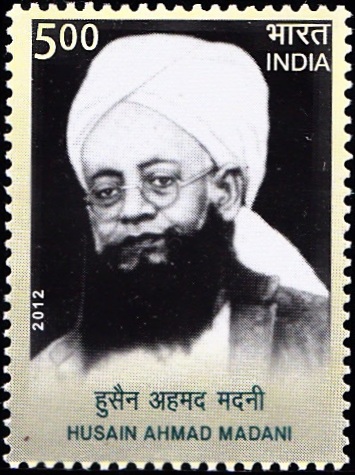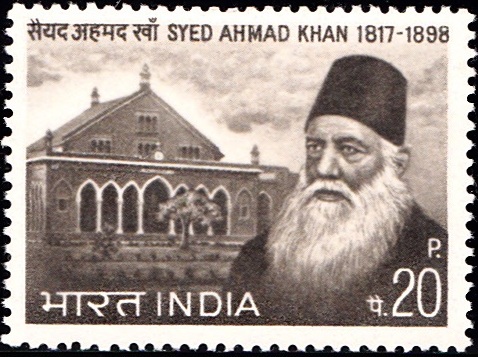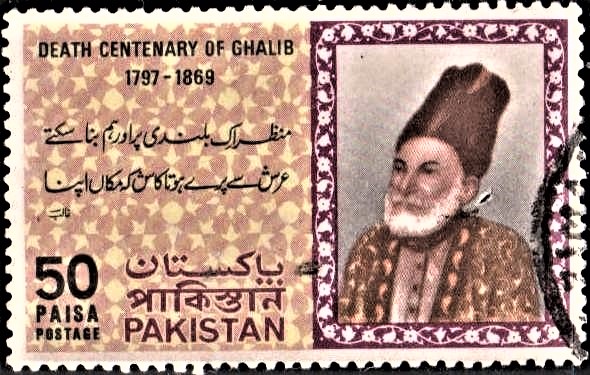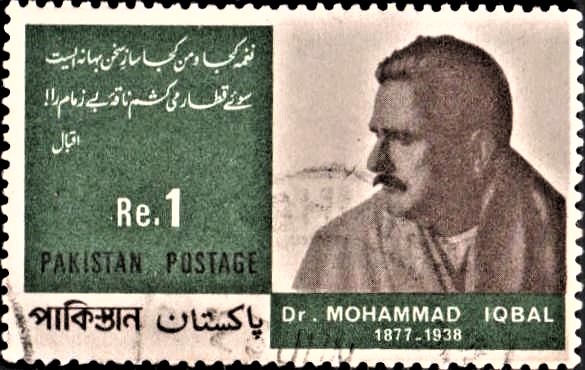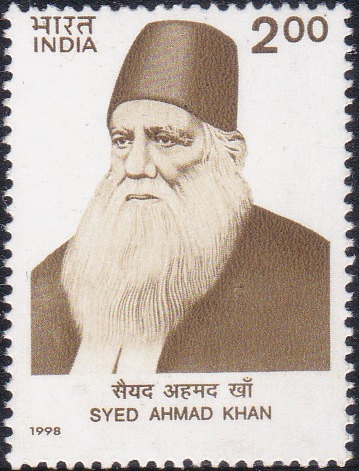
Peerzada Ghulam Ahmad Mehjoor
A commemorative postage stamp on Shayar-e-Kashmir Mahjoor, an Indian Kashmiri poet from the Kashmir Valley :
 Issued by India
Issued by India
Issued on Jun 25, 2013
Issued for : Department of Posts is happy to issue a Commemorative Postage Stamp on Peerzada Ghulam Ahmad Mehjoor.
Credits :
Stamp/FDC : Bharati Mirchandani
Cancellation : Rupesh Kumar
Type : Stamp, Mint Condition
Colour : Multi Colour
Denomination : 500 Paise
Stamps Printed : 0.31 Million
Printing Process : Wet Offset
Printer : India Security Press, Nashik
Name : Peerzada Ghulam Ahmad
Born on Aug 11, 1887 at Mitrigam, Pulwama, Jammu & Kashmir, India
Died on Apr 9, 1952 at Mitrigam, Pulwama, Jammu & Kashmir, India
About :
- Peerzada Ghulam Ahmad Mehjoor was born on 11th August, 1887 at Mitrigam, 40 kms southwest of Srinagar, in Pulwama District to Peer Abdullah Shah and Sayeeda Begum. His mother passed away when he was two years old. He was brought up by his father, a Moulvi by profession, and his grandmother who were both Persian and Arabic scholars.
- Peerzada received his early education from his father. Later on, he was sent to Srinagar for his schooling. His father wanted him to follow his footsteps and become a Moulvi but he could not be confined to such boundations. He slipped away from the Valley in the winter of 1905 and reached Amritsar which was humming with literary activity in those days. He got ample opportunity of meeting well-known Urdu poets of the day and reciting his compositions at a number of poetic symposia throughout Punjab. It is here that he adopted “Mehjoor” as his “pen name”.
- On his return to Kashmir, Mehjoor got a job as a Patwari in the revenue department and spent nearly two years in the frontier region of Baltistan. It was here that he was able to compile his work “Safarnama–e–Baltistan” in which he describes the landscape and beauty of the place.
- Mahjoor began writing Kashmiri poetry in earnest from 1914. Until the time Mehjoor appeared on the scene, Kashmiri poetry had been divided into two water tight compartments, the Persianised mystic love poems of Muslim bards and obscure devotional songs of Hindu poets written in Sanskritised diction. In contrast, Mehjoor’s poetry synthesized culture and language. It portrayed the valley, mountains, lakes, flora and fauna and of the woes of poor and patient people of the valley, voicing their innermost feelings. His words acted as a catalyst in uniting the people of Kashmir socially and spiritually and awakening in them new hope for a better tomorrow.
- Mehjoor revolutionized the sensibility of his people and was acclaimed as the National Poet of Kashmir and conferred the title of Shair-e-Kashmir. When the freedom movement gained momentum in the 1940s, he rose to the occasion and evoked nationalistic sentiment among the masses. He was unarguably a propounder of communal harmony and universal brotherhood. Eminent personalities and poets like Tagore and Iqbal who were his contemporaries acknowledged the aesthetic, linguistic, nationalistic and universal dimensions of his poetry.
- The noted Kashmiri poet and social thinker breathed his last on 9th April, 1952. His body was laid to rest at Athwajan, Srinagar where a mausoleum has been built.
- Text : Based on the material provided by the proponent.
Subscribe
Login
0 Comments



